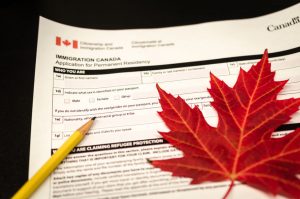On April 14th, 2021, the Minister of Immigration, Marco E. L. Mendicino, stated a new PR program will open for international students and professionals in certain in-demand professions, including many health care occupations. This is especially exciting for international students, as the requirements for the new program can be easily achieved and include:
- The international student must have graduated from a Canadian designated institution (post-secondary school) in the past 4 years
- The student must have English or French language testing scores that is at least CLB 5 or equivalent
- The student must be currently working in Canada (no requirement on the length of time already worked)
Only 40,000 spots are available for international students and the program will open on May 6th, 2021. It’s important to take advantage of this limited time program before the spots are filled. With immigration application, the devil is in the details. As an experienced immigration law firm, we have identified 3 common types of mistakes that frequently result in rejections. Having a rejection is not only time and money wasted, but also puts a red flag on your file for future re-applications.

-
Not understanding explicit program requirements
It is difficult to identify every single element of the application, and it is even more confusing when the application has further sub-programs. For instance, the Federal Express Entry program have three sub-programs, including Canadian Experience Class, Federal Skilled Worker, and Federal Skilled Trades, each with different requirements. If you identify the wrong sub-program in your application, the examining officer may conclude you did not meet its requirements and reject the application. The Canadian Experience Class require 1 year of skilled Canadian experience whereas the Federal Skilled Trades have no such requirement – but if you wrongly stated you are applying for Canadian Experience Class or you just did not say which sub-program you are applying to, then it may lead to a rejection.
As well, many applicants tend to misunderstand specific program requirements. Sometimes to show work experience, the immigration department would ask for notice of assessment (NOA), employment letter, and payroll in strict, prescribed format. Any substitution of materials – such as bank statements for NOA, and any missing/incorrect details – such as missing normal working hours or employer letterhead on the employment letter – will likely lead to a rejection.

-
Lack of coherency and implied program requirements
As well, a permanent residency application must make sense from a coherency perspective. What immigration officers prefer to see is a consistent and simple story of an applicant’s life. For instance, Joe went to school for computer science, then got an entry position as junior software developer, and then got promoted to intermediate software developer.
Of course, people’s lives are rarely linear. But when the situation is more complex – such as multiple career changes, or jobs that does not align with the education background – the immigration officers are more prone to question the application. One of their main worries (and a requirement of many applications, even if not clearly stated within the program) is whether the applicant can perform the duties of their existing job. The more complex an applicant’s education and work history, the harder it is to prove this. We have clients coming to us after receiving rejections for precisely this reason.

-
Inconsistencies in details
This may seem simple to avoid, but we have seen it as top rejection reasons for many applications done by applicants themselves. Something as innocent as writing the date of last entry into Canada as June 1st, 2007 in one form and then as June 15th, 2007 on another form may lead to a finding of “misrepresentation”. This is a reason to automatically reject an application, and at its most severe, may bar the applicant from applying again in the next few years.
It is very hard to ensure every single detail is consistent throughout the entire application. Thus, hiring an experienced immigration law firm to ensure consistency will significantly reduce the risk of a rejection.

Conclusion
3 common reasons for rejecting a PR application include incorrect understanding of the program requirements and identifying the wrong sub-program, lack of coherency within the application materials, and the existence of inconsistencies in application details.
With the opening of the new PR application for international students and professionals in specific fields on May 6th, 2021 – it’s very important to take advantage of this limited time opportunity before the quota is reached. Recruiting Varity Law, an experienced immigration law firm, can maximize your chances of success. We invite you to book a free 30 minutes consultation with us today by calling 905-597-9357.






